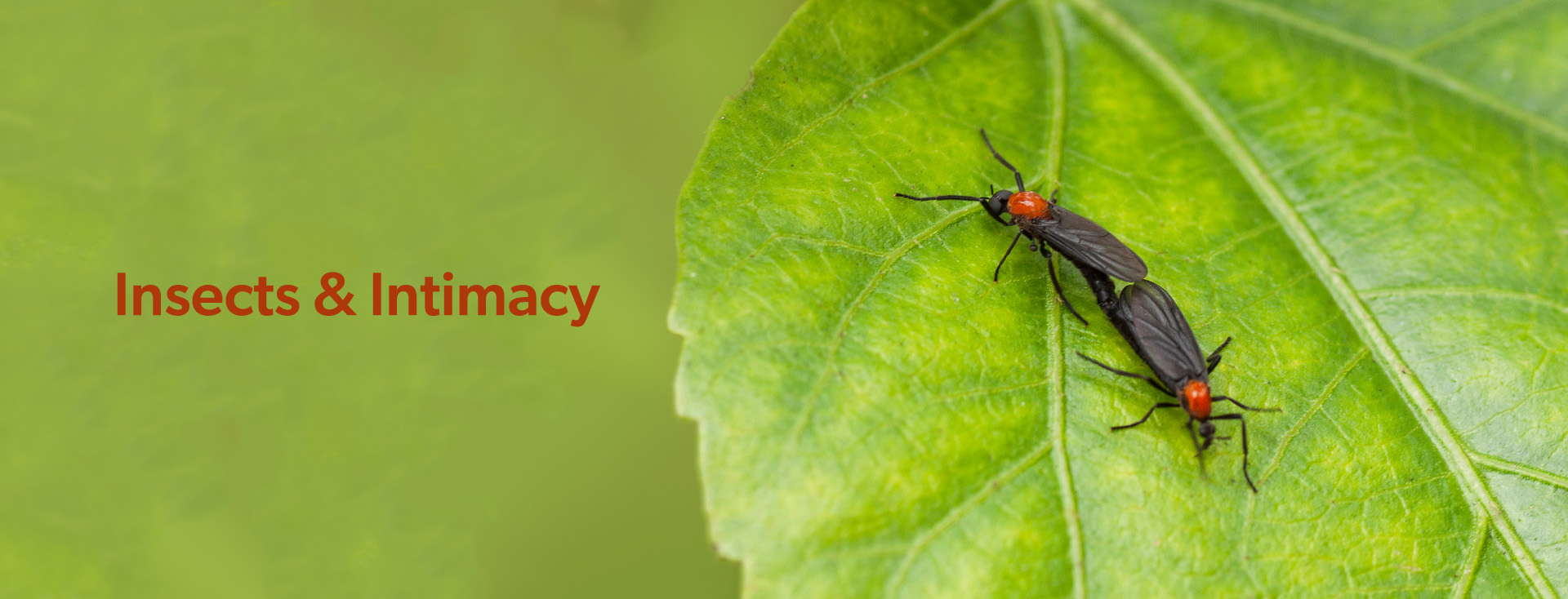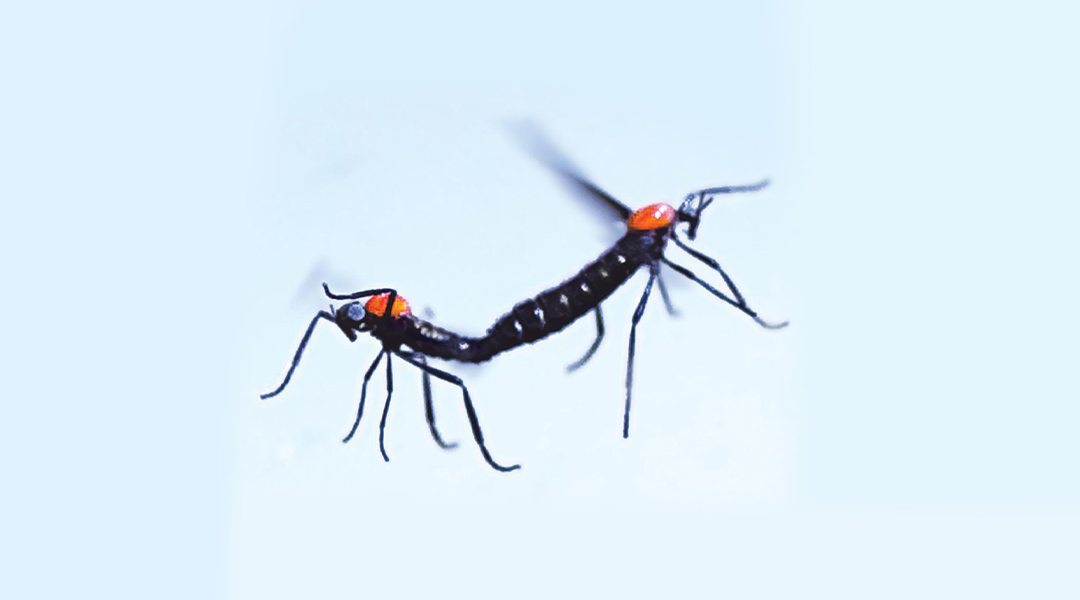
The lifecycle of the lovebug
A lot of parents use the endearment “love bug” when addressing their small children because it implies a cute and cuddly creature. Well, no insect is cute or cuddly, but did you know there really was an insect called a lovebug?
The lovebug, sometimes called the honeymoon fly, is actually a species of march fly found in Central America and the U.S. Gulf States of Texas, Louisiana, Florida, Mississippi, and Alabama. The larvae of the lovebug feed on decaying debris in the underbrush of wooded or grassy areas for most of the year. In their adult form, they feed on nectar from clover, goldenrod, and the Brazilian pepper plant.
Lovebugs emerge from the undergrowth in major flights or swarms twice each year in late April through May and late August through September. The males emerge first and hover over the ground, waiting for the females to arrive. As soon as the females appear, the mating begins. Once a male and female begin to mate they remain attached to each other end-to-end, even in flight, for three days as they copulate the entire time. They get their name lovebug from flying through the air in pairs by the millions. These dedicated couples have been found flying in swarms over 1,400 ft. above the ground.

Once the mating is completed after three days, the female will detach herself, lay her eggs in decaying, grassy undergrowth, and die. The male usually lives a few days longer.
In spite of its name, people don’t necessarily love the lovebug. In fact, it’s considered a nuisance. Because their swarms can be enormous, lovebugs end up dying on car windshields, in radiators, and on the surface of cars in huge numbers. Although it’s not completely understood, they tend to be attracted to light-colored surfaces, especially if they’ve been freshly painted. The body chemistry of the lovebug is acidic with a pH of 6.5 and becomes increasingly acidic if its carcass and egg masses are left on a car throughout the day. In those situations, pits and etches in paint and chrome often happen.
City pest control services usually don’t make an attempt to control lovebugs because their swarms vary in size and are temporary, usually ending in a few weeks. This is unlike mosquitoes that can breed for five months in the Gulf States. Fortunately for humans, the lovebug has some natural predators, such as various parasitic fungi, birds, spiders, centipedes, and the occasional drought that dries out the grassy undergrowth
JOIN THE MOVEMENT
Subscribe to our newsletter and receive inspirational stories delivered to your inbox that spread love, updates on our movement, and notifications on upcoming deals & events.




